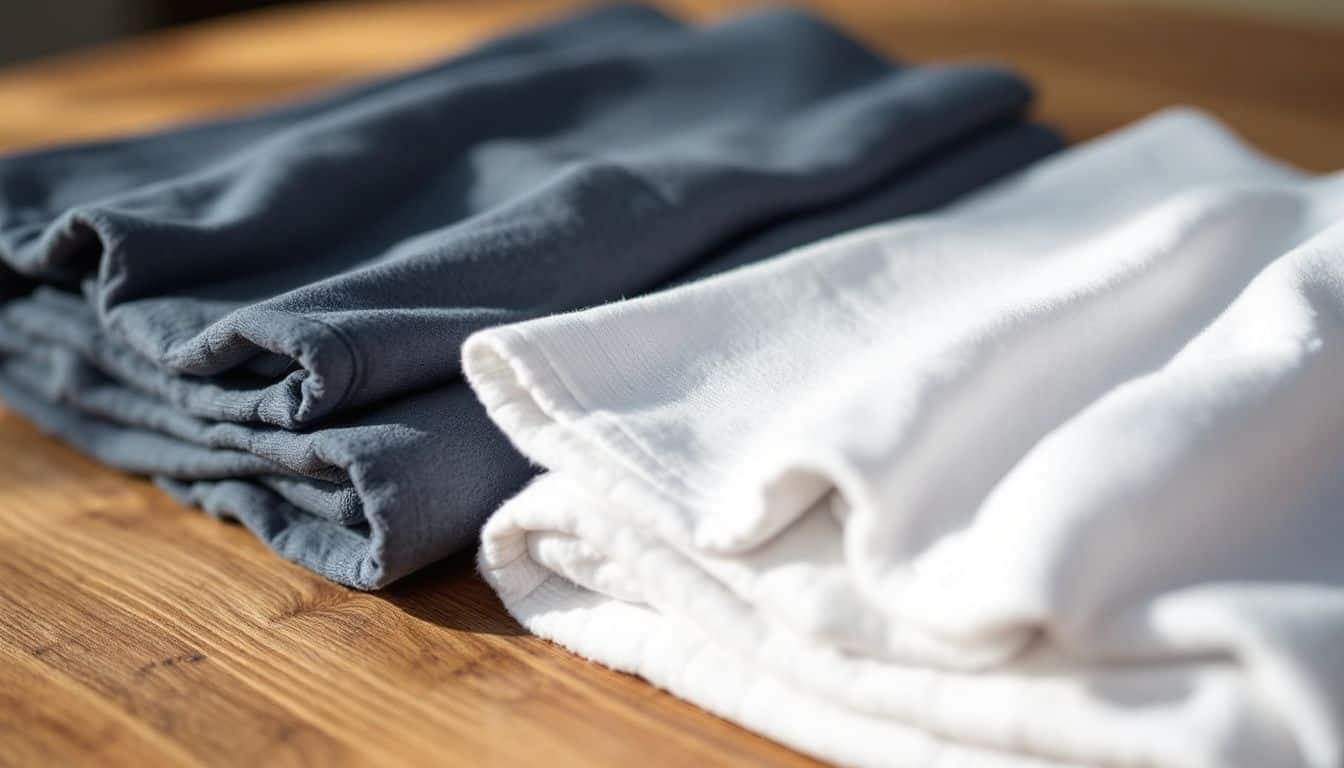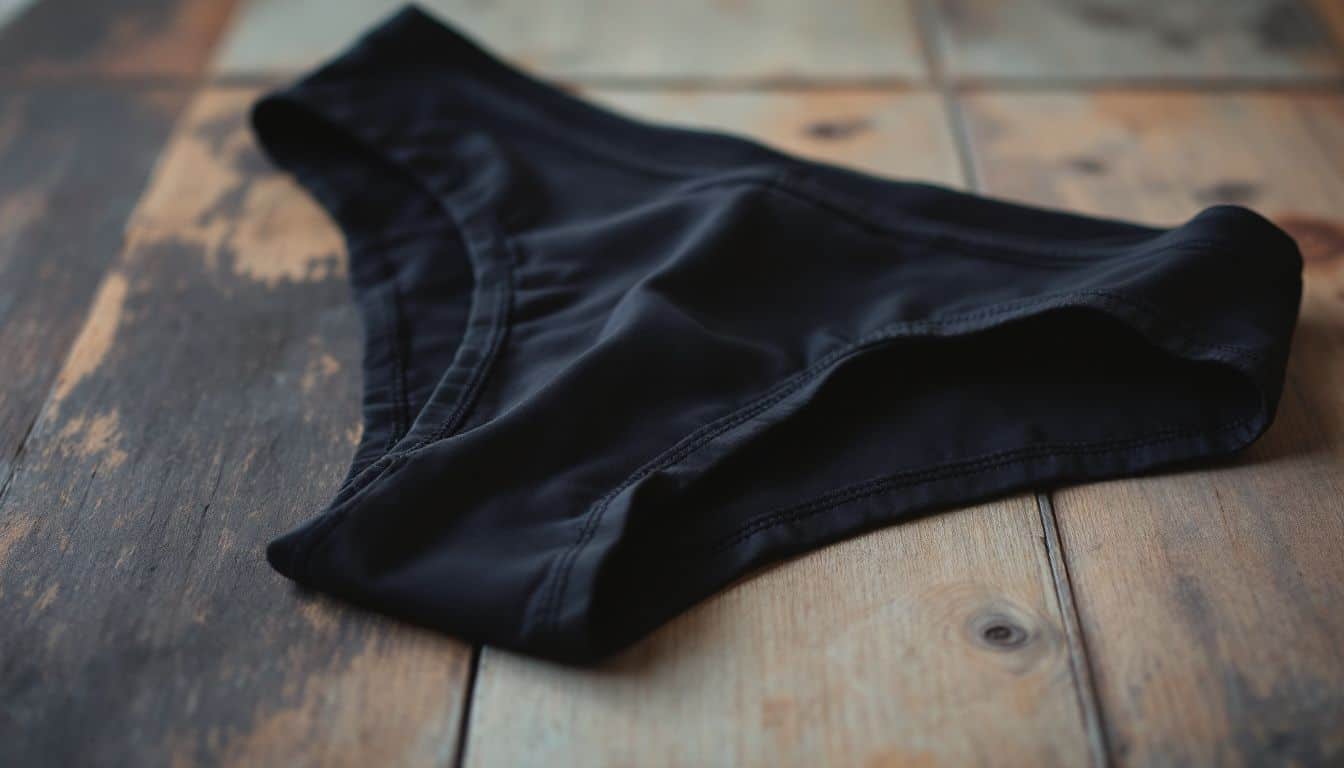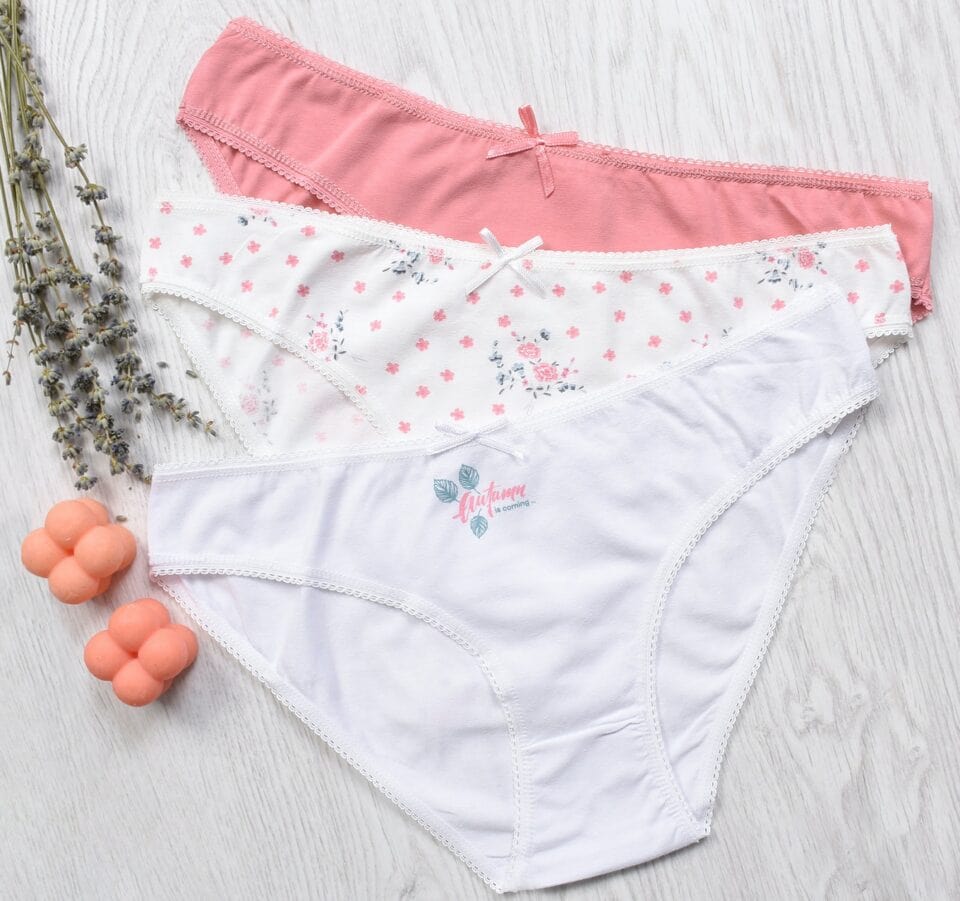Is your underwear drawer causing you daily grief? When you have sensitive skin, choosing the right pair isn’t just about style, it’s about avoiding that dreaded itch. Cotton and nylon are two of the most common fabrics you’ll find, but when it comes to the great debate over cotton vs nylon underwear, which one is truly better for delicate skin?
As someone who has navigated the confusing world of fabrics to find what works, I can tell you the answer isn’t always simple. But don’t worry, I’ve unraveled the details on both materials.
Ready to find lasting comfort and say goodbye to irritation? Let’s get into it.
Key Takeaways
Cotton underwear is highly recommended by dermatologists for sensitive skin because it’s breathable, soft, and naturally hypoallergenic. It excels at absorbing moisture, which helps prevent irritation and yeast infections.
Nylon underwear is durable, stretchy, and excellent at wicking moisture away from the skin, making it ideal for workouts. However, it’s less breathable and can trap heat, potentially creating an environment for bacterial growth.
Skin irritation from underwear is often caused by textile dermatitis, an allergic reaction to dyes and chemicals like formaldehyde used in fabric processing, rather than the fiber itself.
A healthy vaginal pH is acidic, typically between 3.8 and 4.5. Breathable fabrics like cotton help maintain this balance better than synthetic options that trap moisture.
For daily wear with sensitive skin, cotton is the superior choice. For high-intensity activities where sweat is a concern, a moisture-wicking nylon blend with a cotton gusset offers a practical compromise.
Table of Contents
Comparing Cotton and Nylon Underwear

Let’s talk about the basics. Cotton and nylon are two of the biggest players in the underwear game, but they couldn’t be more different in how they feel and perform.
Think of cotton as the reliable, gentle friend and nylon as the high-performance athlete. Each has a time and place, especially when sensitive skin is involved.
| Feature | Cotton | Nylon |
|---|---|---|
| Breathability | Excellent | Poor to Fair |
| Moisture Handling | Absorbs (holds moisture) | Wicks (pulls moisture away) |
| Feel on Skin | Soft, natural | Silky, smooth |
| Best For | Daily wear, sensitive skin | Workouts, seamless look |
| Durability | Good | Excellent |
Properties of Cotton Underwear

Cotton underwear is a classic for a reason. It’s soft, comfortable, and lets your skin breathe. Made from natural plant fibers, cotton feels gentle and is highly absorbent, which helps keep you feeling fresh.
For an even softer experience, look for Pima or Supima cotton. These premium varieties have extra-long fibers that create a smoother, more durable fabric that’s less prone to pilling. In fact, some manufacturers claim Pima cotton has a 50% longer lifespan than regular cotton.
However, cotton isn’t without its flaws. Its high absorbency means it can become saturated with sweat and takes a long time to dry. This can lead to a damp, uncomfortable feeling if you’re exercising or in a humid climate.
For everyday comfort and skin health, nothing beats the gentle, breathable nature of cotton.
Features of Nylon Underwear

Nylon underwear is all about performance and a sleek aesthetic. It feels silky smooth, stretches to fit your body perfectly, and is the go-to fabric for creating a seamless look under tight clothing. Brands like Jockey and Wacoal often use nylon blends for their “no-panty-line” collections.
The specific type often used, Nylon 6,6, was first developed by DuPont in the 1930s and is known for its exceptional strength and durability. It’s highly resistant to abrasion and can be twice as durable as cotton, meaning your underwear will last much longer.
The biggest drawback? Nylon is not very breathable. As a synthetic polymer, it can trap heat and moisture against the skin. This lack of airflow can create a breeding ground for bacteria and yeast, which is a significant concern for those with sensitive skin or who are prone to infections.
Advantages of Wearing Cotton Underwear

When it comes to your intimate health, choosing cotton underwear is one of the simplest and most effective decisions you can make. It’s like giving your skin a much-needed breath of fresh air.
Breathability and Comfort of Cotton

Cotton’s natural fiber structure is inherently porous, which allows air to circulate freely. This is crucial for letting body heat escape and keeping you cool and comfortable throughout the day.
Its ability to soak up moisture is another key benefit. By pulling sweat away from your skin, cotton helps you stay dry and fresh. This simple function is a powerful tool in preventing the damp environment that can lead to skin irritation.
According to the Cleveland Clinic, wearing 100% cotton underwear is a recommended lifestyle change for those dealing with vulvar dermatitis, as it allows the skin to breathe.
This is why comfort is king when picking underwear under a bodysuit or any other clothing. Cotton’s softness prevents the itching and chafing that synthetic fabrics can cause, making it the perfect choice for everyday wear.
Hypoallergenic Benefits of Cotton

For those with sensitive skin, cotton is a true game-changer. It’s naturally hypoallergenic, meaning it’s less likely to cause an allergic reaction compared to synthetic materials. This is why gynecologists and dermatologists consistently recommend it.
Board-certified dermatologist Dr. Marisa K. Garshick states, “Cotton tends to be the best fabric for those with sensitive skin as it is gentle and not irritating.” Opting for organic cotton takes this a step further, as it’s grown without the pesticides and harsh chemicals found in conventional cotton production that can sometimes be irritants.
- Fewer Chemicals: Organic cotton avoids potentially irritating residues from pesticides and synthetic fertilizers.
- No Harsh Dyes: Many organic brands, like Pact and KNOWN SUPPLY, use non-toxic, Oeko-Tex certified dyes or offer dye-free options.
- Prevents Infections: Its breathability and moisture absorption help prevent the buildup of bacteria and yeast, which is crucial for vaginal health.
Trust me, making the switch to high-quality cotton underwear is like giving your skin a cozy, irritation-free hug every single day.
Advantages of Choosing Nylon Underwear

While cotton wins for daily comfort, nylon underwear has some powerful advantages, especially when performance is a priority. It’s tough, flexible, and manages sweat in a completely different way.
Durability and Flexibility of Nylon

Nylon underwear is incredibly resilient. It resists stretching and shrinking, holding its shape far better than cotton after many washes. This makes it a smart choice for exotic dancers, athletes, and anyone who needs their garments to endure rigorous use.
I’ve noticed my nylon workout gear looks almost new for years, while cotton equivalents can start to look worn much faster.
Nylon is like a second skin, it moves with you, not against you.
Its quick-dry feature is also a game-changer for travel or an active lifestyle. A pair of nylon undies can be washed in a hotel sink and be dry in a few hours, a feat cotton could never manage. Plus, that long-lasting durability means less pilling and a longer life for your underwear, which is great for your wallet.
Moisture-Wicking Abilities of Nylon

Nylon’s standout feature is its ability to wick moisture. Unlike cotton, which absorbs and holds sweat, nylon pulls moisture away from your skin and disperses it across the fabric’s surface to evaporate quickly.
This is why it’s the fabric of choice for activewear. Brands like Lululemon build their performance lines around sweat-wicking materials to keep you dry and comfortable during intense workouts. Staying dry helps prevent the chafing and discomfort that can come from exercising in damp clothing.
Impact on Sensitive Skin

Dealing with sensitive skin can feel like a full-time job. Your choice of underwear can either be a source of relief or the cause of significant irritation. It’s about more than just feel, it’s about how the fabric interacts with your body’s delicate ecosystem.
Common Skin Irritations from Underwear

Ouch! Itchy, red, and angry skin is no one’s idea of a good time. Common issues stemming from underwear choice include yeast infections, bacterial vaginosis (BV), and contact dermatitis.
These conditions thrive in warm, moist environments. Synthetic fabrics like nylon can trap heat and sweat, creating the perfect breeding ground for trouble. According to the Cleveland Clinic, tight underwear made of synthetic materials can trap moisture and worsen itching.
But there’s good news. Choosing the right fabric makes a huge difference. Breathable materials like cotton allow air to circulate, keeping the area drier and healthier. If something feels off, listen to your body and consider making a switch.
How Cotton and Nylon Affect Skin Moisture Levels

Let’s get into how these fabrics handle sweat, because it’s a tale of two different strategies.
Cotton is an absorber. It can hold up to 27 times its own weight in water, which is fantastic for pulling initial sweat away from the skin. The problem is, it holds onto that moisture, leading to a damp feeling during a workout or on a hot day. I once made the mistake of wearing cotton undies to a summer music festival, and by midday, I was incredibly uncomfortable.

Nylon, on the other hand, is a wicker. It pulls sweat away from your skin and pushes it to the outer surface of the fabric to dry quickly. This keeps you feeling drier during intense activity, but because the fabric itself isn’t breathable, it can also trap heat and make you sweat more overall. It’s a trade-off between feeling damp from sweat versus feeling hot.
Allergen Potential of Both Materials

When it comes to allergies, the story is more about what’s added to the fabric than the fabric itself. True textile allergies are rare. The real culprits are usually the chemicals used in processing.
According to research, most cases of textile contact dermatitis are caused by additives like disperse dyes (common in synthetics like nylon) and formaldehyde resins used for wrinkle resistance.
- Cotton: Generally considered safe, but non-organic cotton can be processed with chemicals. For those with extreme sensitivities like eczema, brands like JulieMay use GOTS-certified Pima cotton and silk to create certified allergy-free underwear.
- Nylon: As a synthetic, it’s more likely to be treated with disperse dyes, which are a primary cause of allergic contact dermatitis. Its non-breathable nature can also trap these irritants against the skin.
For people with conditions like eczema or psoriasis, breathable and chemical-free fabrics like organic cotton are consistently the top recommendation.
pH Balance Considerations for Intimate Areas

Maintaining a healthy pH balance is crucial for vaginal health. The ideal vaginal environment is acidic, with a pH typically between 3.8 and 4.7, which helps keep harmful bacteria and yeast in check.
Your choice of underwear plays a significant role here. Here’s why:
- Airflow is Key: Breathable fabrics like cotton allow air to circulate, which helps prevent the buildup of excess moisture that can disrupt your natural pH balance.
- Synthetics Trap Moisture: Non-breathable materials like nylon can create a warm, damp environment, which can alter the vaginal pH and increase the risk of infections like bacterial vaginosis or yeast infections.
Think of your vagina as a self-regulating ecosystem. Providing it with a breathable environment by wearing cotton underwear, especially during your period, is one of the best ways to support its natural balance.
People Also Ask
Is cotton or nylon better for sensitive skin?
Cotton is the clear winner for sensitive skin. Dermatologists and gynecologists recommend it because it’s soft, breathable, and hypoallergenic. Nylon is less breathable and can trap heat and moisture, which may lead to irritation, rashes, or infections.
What about other fabrics like rayon or modal?
Fabrics like TENCEL™ Modal and rayon are excellent alternatives. Derived from wood pulp (often beech trees), they are known for being incredibly soft and smooth against the skin. They are also breathable and gentle, making them a great choice for sensitive skin, though some find them less durable than high-quality cotton.
Can underwear choices affect vaginal health?
Absolutely. Underwear directly impacts your vaginal health by affecting airflow and moisture levels. Breathable fabrics like cotton help maintain a healthy pH balance and reduce the risk of yeast infections and bacterial vaginosis. Synthetic fabrics like nylon can trap moisture, creating an environment where harmful bacteria can thrive.
Are thongs bad for sensitive skin?
Thongs can be tricky. While scientific studies haven’t found a direct link between thongs and increased infections, the design can cause friction and irritation for some individuals with very sensitive skin. If you choose to wear one, opt for a style made from a soft, breathable material like cotton and ensure it fits well without being too tight.
How should I care for my underwear to protect sensitive skin?
How you wash your underwear is just as important as the fabric. Dr. Marisa K. Garshick recommends using a fragrance-free, hypoallergenic detergent like Tide Free & Gentle to avoid chemical irritants. Avoid fabric softeners, as they can leave a residue that irritates the skin. Washing in warm water and drying on a low setting can help kill bacteria without damaging the fabric.
Are there eco-friendly options for sensitive skin?
Yes! Many brands now focus on sustainable and skin-friendly options. Look for underwear made from GOTS-certified organic cotton, which ensures the fabric is free from harmful pesticides and chemicals. Other great eco-friendly materials include TENCEL™ Lyocell, bamboo, and hemp, which are known for their softness and breathability. Brands like Toad&Co and Pact are great places to find these options.
References
https://www.tidbitsofexperience.com/cotton-vs-nylon-underwear-which-is-better-for-sensitive-skin/ (2023-01-27)
https://www.ufmunderwear.com/articles/benefits-of-nylon-underwear/ (2023-01-29)
https://www.mdpi.com/2673-7248/3/3/22
https://eczema.org/information-and-advice/triggers-for-eczema/clothing-and-eczema/
https://www.today.com/shop/best-fabrics-fibers-sensitive-skin-t242078 (2021-12-13)
https://www.ufmunderwear.com/articles/which-material-of-underwear-is-best/ (2024-05-13)

